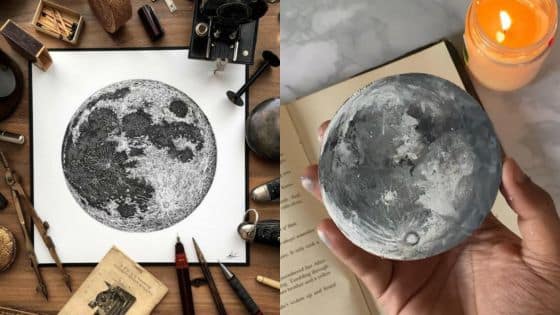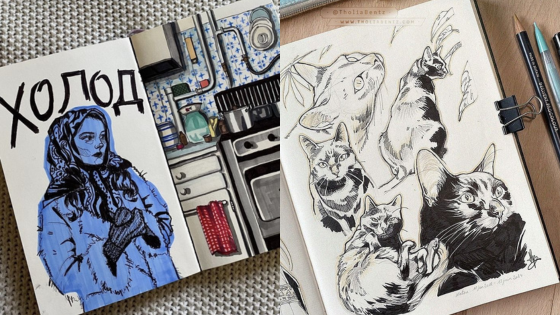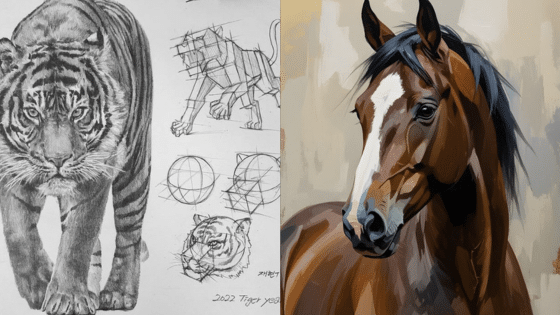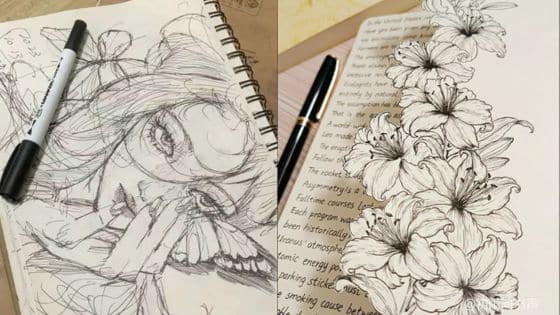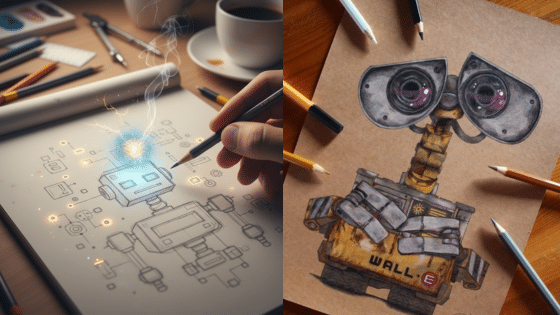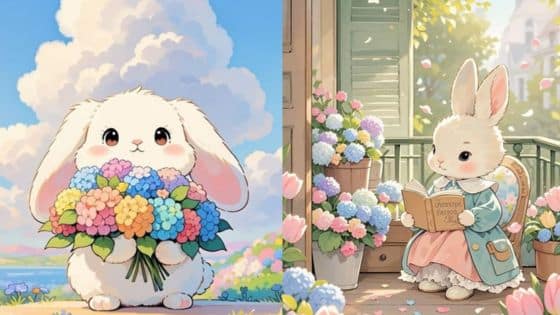Drawing doesn’t have to be intimidating or require perfect technique to create something amazing. Whether you’re picking up a pencil for the first time or looking to break out of a creative rut, the right inspiration can transform a blank page into your next masterpiece.
The coolest drawing ideas often combine unexpected elements, from fantasy creatures made of natural materials to vintage objects that tell stories, giving you endless possibilities to explore your artistic voice. You can start with simple subjects like faces, animals, or everyday objects, then gradually experiment with different themes and styles as your confidence grows.
From mastering fundamental techniques to exploring seasonal themes and advanced storytelling through art, the journey of drawing offers countless opportunities to express your creativity. The key is finding subjects that genuinely interest you and practicing consistently, allowing your unique artistic perspective to develop naturally over time.
Key Takeaways
- Start with basic tools and simple subjects to build confidence before exploring more complex drawing techniques
- Combine unexpected elements and themes to create unique artwork that reflects your personal creative vision
- Practice regularly with different subjects and seasonal inspirations to develop your skills and artistic storytelling abilities


Essential Drawing Tools and Fundamentals
Quality tools paired with solid fundamentals form the foundation of successful drawing. Graphite pencils and colored pencils serve different purposes, while understanding proportions, perspective, and composition transforms basic sketches into compelling artwork.
Choosing the Right Pencils and Sketchbooks
Graphite pencils range from 9H (hardest) to 9B (softest), with HB sitting in the middle. You need at least three pencils: 2H for light lines, HB for general sketching, and 2B for darker values.
Hard pencils (H grades) create light, precise lines perfect for initial sketches. Soft pencils (B grades) produce rich, dark marks ideal for shading and bold lines.
Colored pencils come in wax-based and oil-based varieties. Wax-based pencils blend easily and work well for beginners. Oil-based pencils offer more precision and less waxy buildup.
Your sketchbook paper weight matters significantly. Choose 140gsm or heavier paper to prevent bleeding and tearing. Smooth paper works best for detailed work, while textured paper adds character to sketches.
Spiral-bound sketchbooks lay flat for comfortable drawing. Hardbound books protect your work better but can be awkward to use.
Understanding Proportions and Perspective
Proportions determine how different parts of your subject relate to each other in size. Use the pencil measuring technique: hold your pencil at arm’s length to compare relative sizes between objects.
The human head fits into the body approximately seven to eight times. Eyes sit halfway down the head, not at the top as many beginners assume.
Perspective creates depth and dimension in your drawings. One-point perspective uses a single vanishing point for simple scenes. Two-point perspective employs two vanishing points for more complex angles.
Practice drawing cubes and boxes first. Master these basic forms before attempting complex subjects like buildings or furniture.
Horizon line placement affects your drawing’s mood. A low horizon line makes subjects appear towering and dramatic. A high horizon line creates an overview effect.
Mastering Composition Basics
Composition guides where viewers look in your drawing. The rule of thirds divides your paper into nine equal sections using two horizontal and two vertical lines.
Place important elements along these lines or at their intersections. This creates more dynamic, visually interesting artwork than centering everything.
Leading lines draw the viewer’s eye through your composition. Roads, rivers, fence lines, or even shadows can serve as leading lines toward your main subject.
Value contrast separates your subject from the background. Place your darkest darks next to your lightest lights at the focal point.
Negative space refers to empty areas around your subject. Use negative space intentionally to balance your composition and avoid cluttered drawings.


Coolest Drawing Ideas for Your Sketchbook
Transform your blank pages into creative masterpieces with drawing prompts that challenge conventional thinking and practice techniques that build fundamental skills. These approaches range from unique conceptual exercises to beginner-friendly subjects that anyone can master.
Unique Drawing Prompts to Spark Creativity
Break out of routine drawing habits with prompts that push your artistic boundaries. Draw everyday objects from unusual perspectives, like viewing your coffee mug from directly above or sketching your shoes from a worm’s eye view.
Create hybrid creatures by combining two different animals into one imaginative being. Mix a elephant with a butterfly or merge a fish with a bird to explore new forms.
Try emotion-based drawing where you sketch abstract shapes and lines that represent specific feelings. Draw anger using sharp, jagged lines or happiness with flowing, circular motions.
Time-based challenges add excitement to your practice. Set a timer for 30 seconds and capture the essence of your subject quickly. This forces you to focus on the most important elements.
Draw your non-dominant hand while it performs simple tasks like holding a pen or making a fist. This exercise improves observation skills and hand-eye coordination.
Imaginative Drawing Practice Techniques
Develop your creative muscles through structured imagination exercises. Blind contour drawing involves sketching your subject without looking at your paper, forcing you to truly observe what you’re drawing.
Practice gesture drawing with figures in motion. Capture people walking, running, or dancing in quick 2-minute sketches that emphasize movement over detail.
Memory drawing strengthens visual recall abilities. Study a photograph for one minute, then draw it from memory without looking back at the reference.
Create thumbnail compositions by filling small rectangles with different scene layouts. This helps you explore various arrangements before committing to a full drawing.
Try negative space drawing where you focus on the empty areas around your subject rather than the subject itself. This technique reveals new ways to see familiar objects.
Easy Drawing Ideas for Beginners
Start with simple subjects that build confidence and fundamental skills. Your own hands provide the perfect practice model since they’re always available and offer complex forms to study.
Draw basic household items like teapots, books, or fruit. These objects have clear shapes and interesting textures that help you understand light and shadow.
Simple portraits of friends or family members teach proportion and facial structure. Begin with basic oval shapes and gradually add features.
Nature elements like leaves, flowers, or rocks offer organic shapes that are forgiving to draw. Each leaf is unique, so there’s no “wrong” way to capture it.
Architectural details such as doorways, windows, or bridges provide practice with perspective and geometric forms. Start with simple structures before attempting complex buildings.


Creative Drawing Themes and Styles
Drawing themes range from simple doodles to complex optical illusions, each offering unique creative challenges. These styles help artists develop different skills while exploring various artistic expressions.
Doodles and Cute Drawing Ideas
Doodles serve as the foundation for creative expression and skill development. Start with basic shapes like circles, squares, and triangles to create simple characters.
Popular cute drawing subjects include:
- Animals with oversized eyes and rounded features
- Food items with facial expressions
- Miniature objects and kawaii-style characters
- Simple flowers, hearts, and geometric patterns
Practice creating repetitive patterns in margins of notebooks. These exercises improve hand-eye coordination and build confidence.
Transform basic shapes into recognizable objects. A circle becomes a sun, face, or planet with minimal additions.
Cute drawing ideas work well for beginners because they require fewer technical skills. Focus on clean lines and consistent proportions rather than complex shading.
Still Life Drawing Inspiration
Still life drawing develops fundamental artistic skills through careful observation. Set up arrangements using household objects with varying textures and shapes.
Essential still life subjects:
- Fruits and vegetables for organic forms
- Glass bottles and ceramic vases for reflective surfaces
- Fabric draping for texture practice
- Musical instruments for complex geometric shapes
Lighting creates dramatic effects in still life compositions. Position a single light source to cast strong shadows and highlights.
Start with simple three-object arrangements before adding complexity. Practice drawing individual items separately, then combine them into cohesive compositions.
Pay attention to negative space between objects. This helps create accurate proportions and spatial relationships.


Cartoon Characters and Fantasy Concepts
Cartoon characters allow creative freedom while teaching essential drawing principles. Begin with basic head shapes and experiment with exaggerated features.
Character design involves understanding proportions and personality traits. Large eyes suggest innocence, while angular features create villainous appearances.
Fantasy drawing elements include:
- Dragons with detailed scales and wing structures
- Magical creatures like unicorns and phoenixes
- Enchanted forests with twisted trees
- Medieval castles and mystical landscapes
Study animation principles to make characters more dynamic. Use squash and stretch techniques to add life to static drawings.
Fantasy concepts combine reality with imagination. Reference real animals when designing mythical creatures for believable anatomy.


Abstract Art and Optical Illusions
Abstract art focuses on shapes, colors, and forms rather than realistic representation. Start with geometric patterns and experiment with organic flowing lines.
Create depth using overlapping shapes and varying line weights. Bold contrasts between light and dark areas add visual interest.
Optical illusion techniques:
- Parallel lines creating movement effects
- Repeating patterns that seem to shift
- Impossible objects like Penrose triangles
- Checkerboard patterns with curved distortions
Practice drawing perfect circles and straight lines freehand. These skills improve precision in abstract compositions.
Optical illusions challenge perception through mathematical principles. Study examples like M.C. Escher’s work to understand underlying structures.
Experiment with different mark-making techniques. Cross-hatching, stippling, and scribbling create various textures and tonal values.
Drawing People and Self-Portraits
Drawing people requires understanding basic proportions and facial features, while self-portraits offer unique opportunities to practice capturing likeness and exploring creative expression techniques.
Approaches to Drawing People
Start with basic shapes to establish the head structure. Use an oval for the face and divide it into thirds horizontally.
The eyes sit on the middle line, with one eye-width of space between them. The nose base aligns with the bottom third line.
Key proportions to remember:
- Head height equals eight head-lengths for a full body
- Eyes are positioned halfway down the head
- Mouth sits one-third up from the chin
Practice gesture drawing to capture movement and posture. Quick 30-second sketches help you understand body language before adding details.
Focus on one feature at a time when learning. Master eyes before moving to noses, then mouths.


Tips for Proportion and Expression
Measure relationships between facial features using your pencil as a measuring tool. Hold it at arm’s length to compare distances.
Common proportion mistakes:
- Making eyes too large
- Placing ears too high or low
- Drawing noses too narrow
Study different angles and lighting conditions. Side lighting creates dramatic shadows that define facial structure.
Expression comes from subtle changes in eye shape and mouth position. Raised eyebrows suggest surprise, while downturned mouth corners indicate sadness.
Practice drawing the same person with different expressions. This builds your understanding of how features change with emotion.
Creating Memorable Self-Portraits
Use a mirror or reference photo with good lighting. Natural window light provides even illumination without harsh shadows.
Start with a light sketch of basic proportions. Map out eye placement, nose width, and mouth position before adding details.
Creative self-portrait approaches:
- Draw yourself in different art styles
- Focus on specific features like hands or eyes
- Create abstract interpretations of your appearance
Experiment with different drawing materials. Charcoal creates dramatic contrasts, while colored pencils allow for realistic skin tones.
Consider your background and composition. Simple backgrounds keep focus on your face, while detailed settings tell a story about your personality.
Seasonal and Holiday Drawing Ideas
Holiday-themed artwork captures the magic of special occasions through spooky Halloween characters and festive Christmas scenes. These seasonal drawings let you explore traditional symbols while developing your artistic skills throughout the year.
Halloween Drawing Inspiration
Halloween offers endless opportunities to practice drawing dark, mysterious subjects. Pumpkins make excellent beginner projects, from simple jack-o’-lantern faces to detailed carved designs with flickering candlelight effects.
Classic monsters provide character drawing practice. You can sketch vampires with dramatic capes, werewolves mid-transformation, or friendly ghosts floating through haunted houses. Each creature teaches different techniques for facial expressions and body proportions.
Spooky landscapes challenge your composition skills. Draw twisted trees with bare branches, fog-covered graveyards, or old Victorian houses with broken shutters. These scenes work well in black and white or with limited color palettes.
Try combining multiple Halloween elements in one drawing. A witch stirring a bubbling cauldron while bats fly overhead creates dynamic storytelling through art.
Festive Christmas Drawing Ideas
Christmas drawings celebrate winter warmth through cozy indoor scenes and sparkling decorations. Christmas trees offer practice with geometric shapes, from simple triangular outlines to detailed ornament arrangements and twinkling lights.
Gift scenes teach you to draw wrapped packages, ribbons, and bows. Stack presents under trees or show hands exchanging carefully wrapped gifts. These drawings focus on texture and pattern work.
Winter landscapes capture seasonal beauty through snow-covered cabins, icicles hanging from roofs, and smoke curling from chimneys. Add footprints in fresh snow or children building snowmen for storytelling elements.
Holiday characters like Santa Claus, reindeer, and elves provide figure drawing practice. Focus on their distinctive clothing details, facial expressions, and proportions to make them recognizable and charming.


Advanced Drawing Practices and Storytelling
Mastering advanced drawing requires consistent skill development through progressive techniques and dedicated practice routines. Visual storytelling transforms static images into compelling narratives that communicate complex ideas and emotions to viewers.
Developing Drawing Skills Over Time
Advanced drawing skills build through structured practice and gradual complexity increases. You should focus on fundamental techniques like light manipulation, shadow rendering, and precise proportions before attempting complex compositions.
Daily practice routines accelerate skill development significantly. Dedicate 30-60 minutes daily to specific exercises like gesture drawing, still life studies, or anatomical sketches.
Progressive difficulty levels help maintain momentum without overwhelming yourself. Start with simple subjects like eggs or spheres, then advance to intricate textures, complex lighting scenarios, and dynamic poses.
Key skill areas to prioritize:
- Value control – mastering light and shadow relationships
- Line quality – developing confident, purposeful strokes
- Composition – arranging elements for visual impact
- Detail rendering – balancing precision with artistic expression
Track your progress through dated sketches and regular self-assessment. Compare current work to pieces from previous months to identify improvement areas and celebrate achievements.
Illustrating Stories Through Art
Visual storytelling transforms drawings into narrative experiences that engage viewers emotionally. You can illustrate stories through character development, environmental context, and symbolic elements within your compositions.
Character expression drives story communication effectively. Focus on facial features, body language, and gesture to convey personality traits, emotions, and motivations without written explanation.
Environmental storytelling uses background elements to establish mood and context. Include relevant props, lighting conditions, and architectural details that support your narrative theme.
Effective story illustration techniques:
- Sequential panels – showing story progression through multiple frames
- Symbolic imagery – incorporating meaningful objects or colors
- Perspective choices – using viewpoints to create emotional impact
- Compositional flow – guiding viewer attention through deliberate element placement
Pencil drawing ideas for storytelling include character portraits showing internal conflict, scenes depicting pivotal story moments, or symbolic still life arrangements that represent abstract concepts.
Practice illustrating familiar stories first, then develop original narratives through your artwork.
- 0shares
- Facebook0
- Pinterest0
- Twitter0
- Reddit0








